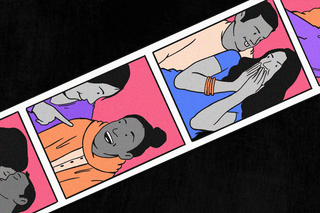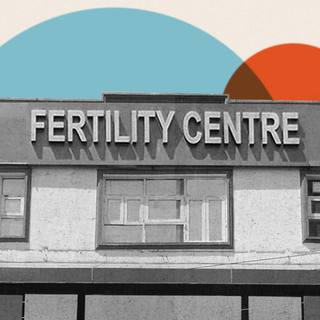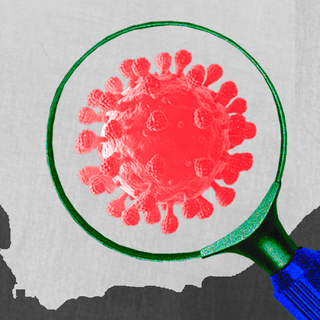
What Happy Relationships Look Like, According to Research
From empathy to having boundaries, the science of healthy relationships advocates for emotional responsiveness.

We know what breaks a relationship: lack of communication, absent empathy, no boundaries. There are infinite permutations to how a toxic relationship comes to be. But what does a healthy, happy relationship look like?
It may help to look at the science for answers.
“The science of love and relationships boils down to fundamental lessons that are simultaneously simple, obvious, and difficult to master,” TIME noted. “… empathy, positivity, and a strong emotional connection drive the happiest and healthiest relationships.”
The habits of healthy couples bear some interesting resemblance. Numerous studies show that intimate relationships, such as marriages, are the single most important source of life satisfaction.
For one, generosity makes a difference. In 1990, psychologist John Gottman, who pioneered research into marriage and relationships, looked at 130 married couples. Throughout the day, couples make requests for connection from each other, what he called “bids.” On a vacation, for example, when a partner who is into flora asks the other one to look at a rare flower, he is “requesting a response from his wife—a sign of interest or support—hoping they’ll connect, however momentarily,” The Atlantic explained. How the other partner responds reveals a lot; if they “turn towards” the flower and engage with it, it is a sign of respect and acknowledgment. As opposed to someone who says “Don’t disturb me” or passively looks and goes back to doing what they were. These “bids” show how partners meet emotional needs.
In another fascinating experiment, Gottman set up a “Love Lab” in 1986. Along with others, he observed how newlyweds interacted with each other. The couples were hooked up to electrodes; they spoke about details such as how they met, a positive memory, and a major conflict they faced together. The electrodes measured the subjects’ blood flow, heart rates, and how much sweat they produced. Researchers followed up with the couples six years later; the data helped them divide the couples into two categories — “masters” and “disasters.”
The disasters had one thing in common: they were more physiologically active during the experiment (think sweaty hands, quick heart rate). They showed signs of being in a “fight-or-flight mode” in their relationships. “Having a conversation sitting next to their spouse was, to their bodies, like facing off with a saber-toothed tiger. Even when they were talking about pleasant or mundane facets of their relationships, they were prepared to attack and be attacked,” The Atlantic noted.As opposed to this, the “masters” had an understanding and trust that made them emotionally and physically comfortable.
Related on The Swaddle:
Long‑Term Relationship Happiness Might Be Hard Coded in Our DNA
Another good marker is to look at how people in a relationship handle good news. We know that how a partner responds in difficult circumstances says much about their individual constitution, but their ability to respond to happy emotions also makes a significant difference. In 2006, researchers videotaped 79 dating couples as the subjects discussed positive and negative events with each other. After each round of discussion, members of each paper rated how satisfied they were with the partners’ response; how “understood” and “validated” they felt. If someone got a high rating, it meant the partner would comment, engage, ask questions. A low rating involved passive, generic responses like “That’s nice” or “Good to hear.” Interestingly, how partners responded to happy news was more important than a “sympathetic” response to negative news. The researcher argued that “fixing a problem or dealing with a disappointment—though important for a relationship—may not make a couple feel joy, the currency of a happy pairing.”
So, a good sign is to look at individual behaviors through the good parts, not only the bad ones, making kindness one of those simple but crucial takeaways.
Gottman also noted that the disasters were “scanning the social environment for partners’ mistakes.” Julie Gottman, another psychologist, added “it’s scanning the partner for what the partner is doing right or scanning him for what he’s doing wrong and criticizing versus respecting him and expressing appreciation.” Moreover, criticism and rejection, which trigger a cycle of defensiveness and withdrawal, are interpreted in the brain as danger cues. On the other hand, evidence shows kindness is like an echo chamber; the more someone receives, the more they will be kind themselves, which amplifies love and support in a relationship.
There is also a factor of power balance at play. In another study, researchers looked at 181 heterosexual couples, who had been together for a period ranging between one month and eight years. They were asked about the level of oppression, power, and trust they feel in the relationship. This was to gauge how actual and perceived power in relationships influenced health. They found each individual needs to feel a high sense of personal power. “It appears that the subjective feeling of power and the feeling of being able to act freely significantly impact the quality of the relationship,” the researcher concluded. In other words, when both partners are able to assert their preferences when making decisions. Shared decision-making helped “validate” each partner, according to a 2011 study that looked at 1,000 couples over the course of 20 years.
Of course, how couples argue could also tell a story of what “healthy” conflicts could look like. Most couples tend to fight about the same beaten issues: money, children, in-laws, intimacy. A 2019 study found happy couples “tend to take a solution-oriented approach to conflict, and this is clear even in the topics that they choose to discuss,” lead author Amy Rauer, associate professor of child and family studies, said. “Being able to successfully differentiate between issues that need to be resolved versus those that can be laid aside, for now, maybe one of the keys to a long-lasting, happy relationship.”
Even practice helps. Long, happy marriages tend to resemble a “slow-moving rom-com,” according to a 2018 study. In that, the criticism and bicker slowly give way to friendship and humor. “When couples stick together through difficult times, remain faithful to one another, and actively work to resolve problems, positive long-term outcomes (while not guaranteed) are common,” other researchers noted too.
Related on The Swaddle:
Respectfully Disagree: What Makes Relationships Toxic?
“The thing that totally stands out in all of the developmental psychology, social psychology and our lab’s work in the last 35 years is that the secret to loving relationships and to keeping them strong and vibrant over the years, to falling in love again and again,” Sue Johnson, a clinical psychologist in Ottawa, said, is “is emotional responsiveness.”
“The $99 million question in love is, ‘Are you there for me?’” says Johnson. “It’s not just, ‘Are you my friend and will you help me with the chores?’ It’s about emotional synchronicity and being tuned in.”
But emotional responsiveness is complex and based on various factors; past trauma and insecurities chief among them. Further, the pandemic has changed how we understand intimacy. So even while people look for “healthy relationships,” they still hold on to old emotional pain and may be unable to recognize the “green flags.”
“What they are doing is running an old script based on the pattern of behavior formed by previous dating trauma. They may be saying the right things and smiling in all the right places but they are waiting and expecting disappointment at best and betrayal at worst,” senior therapist Sally Baker tells Metro.co.uk.
It takes time, healing, and knowing oneself well. But sometimes, knowing what works can also be a conscious act of improving the relationship health.
“You can think about it as a fixed trait: Either you have it or you don’t,” writer Emily Esfahani Smith wrote. “Or you could think of kindness as a muscle. In some people, that muscle is naturally stronger than in others, but it can grow stronger in everyone with exercise.”
There is no one “secret” to being a happy couple. But probing some traits can help piece together a culture of healthy love and intimacy. It may help to identify the green in a sea of red flags.
Saumya Kalia is an Associate Editor at The Swaddle. Her journalism and writing explore issues of social justice, digital sub-cultures, media ecosystem, literature, and memory as they cut across socio-cultural periods. You can reach her at @Saumya_Kalia.
Related


Lok Sabha Passes Bill Regulating IVF Clinics to ‘Prevent Misuse’
